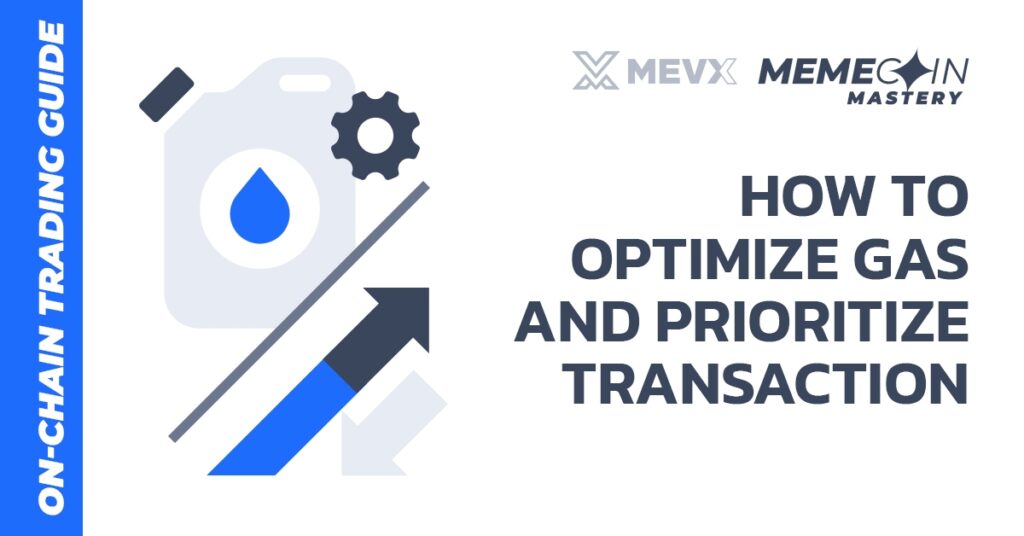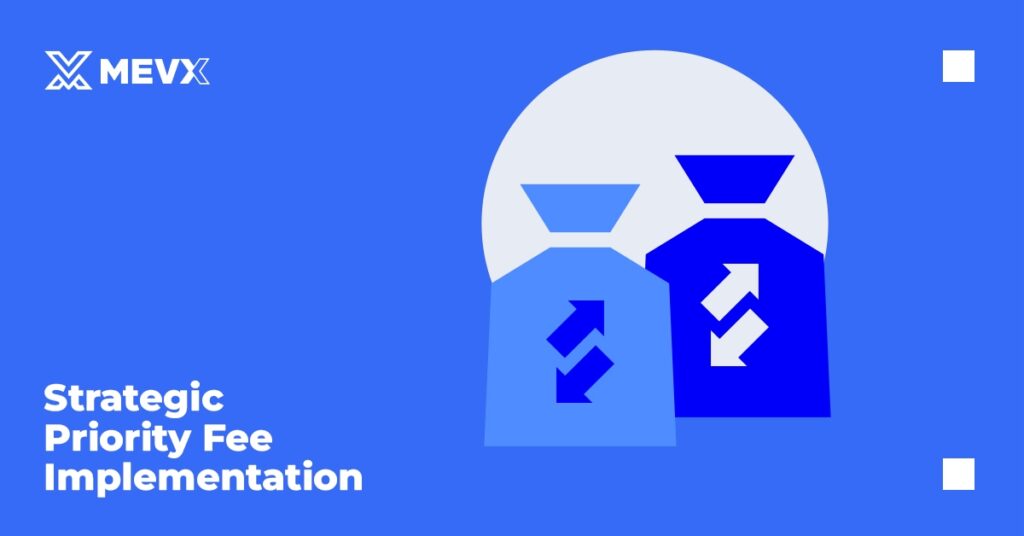In meme coin trading, execution speed often determines profit margins. The difference between landing a profitable entry and missing the opportunity frequently comes down to transaction prioritization and gas optimization strategies. Understanding Solana’s unique transaction fee mechanics and implementing advanced optimization techniques can provide significant competitive advantages in fast-moving markets.

Understanding Solana Transaction Fee Mechanics
Unlike Ethereum’s auction-based gas system, Solana employs a more predictable fee structure that sophisticated traders can leverage for consistent execution advantages.
Base Fee Structure
Solana transactions carry a base fee of 5,000 lamports (0.000005 SOL) per signature, with additional fees for compute units consumed during execution.
This predictable base cost allows for precise transaction cost calculations and strategic fee optimization.
The network processes transactions based on priority fees, but unlike Ethereum, Solana’s parallel processing architecture means higher fees don’t guarantee faster inclusion during network congestion.
Understanding this distinction is crucial for developing effective prioritization strategies.
Priority Fee Dynamics
Priority fees on Solana function as additional payments that validators use to order transactions within blocks. During high network activity, strategic priority fee usage becomes essential for the reliable execution of time-sensitive meme coin trades.
Monitor network congestion patterns throughout trading sessions. Solana typically experiences higher congestion during U.S. evening hours and weekend periods when retail activity peaks.
Adjust priority fees proactively based on these patterns rather than reactively during missed execution opportunities.
Strategic Priority Fee Implementation
Dynamic Fee Adjustment
Implement dynamic priority fee strategies that adjust based on real-time network conditions and trade urgency. For high-conviction entries during token launches or major breakouts, allocate 0.001-0.005 SOL for priority fees to ensure rapid execution.
Use Solana RPC methods to query recent priority fee statistics before submitting transactions. The getRecentPrioritizationFees RPC call provides data on fees paid by recently processed transactions, enabling informed fee-setting decisions.

Transaction Classification System
Develop a systematic approach to categorizing transactions by urgency and adjusting fees accordingly. High-priority transactions include initial entries during token launches, emergency exits during rug pulls, or arbitrage opportunities with narrow time windows.
Medium-priority transactions encompass routine position adjustments and staged exits during normal market conditions. Low-priority transactions include portfolio rebalancing and non-time-sensitive transfers that can wait for optimal network conditions.
RPC Optimization for Speed Advantage
Custom RPC Configuration
Default RPC endpoints often create unnecessary latency in trade execution. Configure custom RPC connections to high-performance nodes that provide faster transaction propagation and confirmation.
Premium RPC providers like GenesysGo, Triton, or QuickNode offer enhanced performance features, including faster transaction submission, priority routing, and reduced latency. The monthly cost of premium RPC access typically pays for itself through improved execution on just a few profitable trades.
Connection Pool Management
Maintain multiple RPC connections to ensure redundancy during network stress periods. Implement automatic failover systems that switch between RPC providers when primary connections experience delays or failures.
Configure connection pools with different endpoints optimized for specific functions: fast nodes for transaction submission, reliable nodes for account monitoring, and high-throughput nodes for bulk data queries.
Bundle Transactions for Efficiency
Atomic Transaction Grouping
Solana’s transaction bundling capabilities allow multiple operations within a single atomic transaction, reducing overall network load and ensuring simultaneous execution of related operations.
Bundle related activities like token swaps with subsequent liquidity provision, or coordinate multiple position exits within single transactions. This approach reduces total fees while ensuring operations complete together or fail together, eliminating partial execution risks.

Cross-Program Invocations
Leverage Solana’s cross-program invocation (CPI) capabilities to execute complex trading strategies within single transactions. Advanced traders can bundle DEX interactions with on-chain analytics queries, position management, and even social signal integration within atomic operations.
Compute Unit Optimization
Monitor compute unit consumption for different transaction types and optimize instruction ordering to minimize total compute requirements. Solana charges fees based on compute units consumed, making optimization directly profitable.
Structure transaction instructions to minimize cross-program calls and reduce overall compute complexity. Simple optimizations like reducing unnecessary account lookups or combining related operations can decrease fees by 20-30% on complex transactions.
Advanced Execution Strategies
Pre-Confirmation Transaction Management
Implement systems that track transaction status between submission and confirmation, allowing for rapid resubmission with adjusted parameters if initial attempts fail or experience delays.
Use the getSignatureStatuses RPC method to monitor transaction progression through network processing stages. This visibility enables proactive response to potential execution failures before missing trading opportunities.
Network Congestion Adaptation
Develop automated systems that adjust trading strategies based on network performance metrics. During high congestion periods, focus on higher-conviction trades that justify increased fees while postponing routine operations.
Monitor cluster performance metrics, including average confirmation times, transaction success rates, and current fee levels. Adjust position sizing and trade frequency dynamically based on execution cost implications.
Practical Implementation Framework
Fee Budget Management
Allocate specific percentages of expected profits toward transaction fees based on trade types and market conditions. High-frequency strategies during volatile periods may justify 2-3% of position value in fees, while routine operations should target sub-0.5% fee ratios.
Execution Timing Optimization
Analyze historical network performance data to identify optimal execution windows for different transaction types. Non-urgent operations often execute more cost-effectively during off-peak hours with minimal priority fees.
Performance Measurement
Track execution success rates, average confirmation times, and fee efficiency across different strategies and network conditions. Use this data to refine optimization approaches and identify the most cost-effective execution patterns for your trading style.
Mastering transaction optimization provides sustainable competitive advantages in meme coin trading. These techniques compound over numerous transactions, significantly impacting overall profitability through reduced costs and improved execution reliability.
Tomorrow’s article explores “Risk Management Through Onchain Monitoring,” where we’ll examine how real-time blockchain data can enhance risk assessment and automated protection strategies for meme coin portfolios.
Follow our MevX blog today for more guides on on-chain trading.
Share on Social Media:
